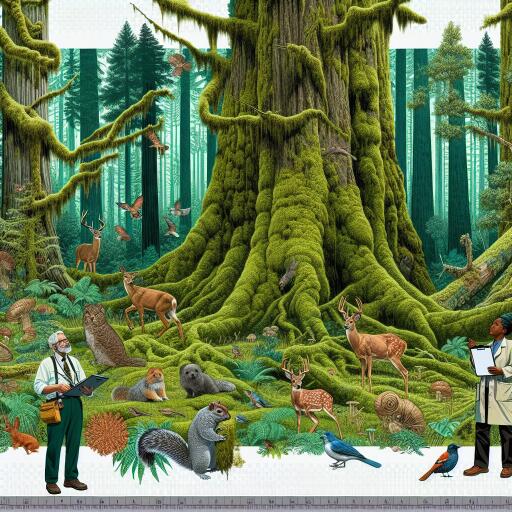
Unveiling the Enigma: The Uncertain Extent of Our Remaining Old-Growth Forests
Grasping the full scope of our planet’s precious old-growth forests remains an elusive endeavor— a complexity laid bare by recent efforts to chart these vital ecosystems. In a significant push under the Biden administration, the U.S. Forest Service undertook an unprecedented nationwide survey in April 2023, aiming to delineate the breadth of mature and old-growth forests across federal lands. This initiative aligns with a broader, ambitious strategy to leverage the substantial carbon-sequestration capabilities of these ancient woodlands as a natural countermeasure against climate disruption.
At the heart of this strategy is the vision to shift away from felling older trees towards preserving their existence, backed by scientific evidence highlighting their efficiency in absorbing atmospheric carbon dioxide. The strategy’s blueprint was outlined in the “Land Management Plan Direction for Old-Growth Forest Conditions Across the National Forest System,” introduced in December 2023. This plan received acclaim from environmental circles and scientific communities for its forward-thinking approach to mitigating the nation’s carbon footprint. It proposes overhauls to local forest management plans, potentially altering the landscape of conservation across regions like Washington, Oregon, and Northern California.
However, identifying the precise locations of these older trees for conservation has presented a formidable challenge. Critics, alongside the Forest Service itself, acknowledge the limitations inherent within the currently available maps and inventories – noting their lack of detail for granular, stand-by-stand management decisions. Reflecting this, a study published by Forest Service scientists in August 2023 suggested that while the maps offer a high degree of accuracy on a broad scale, identifying mature and old-growth stands for management purposes requires additional local-level measurements and adaptations.
The Forest Service’s mapping efforts have been critiqued for producing “low-resolution” maps that, although helpful for overviewing large swathes of land, fail to deliver the detailed insights needed for effective conservation at the stand level. This approach has drawn scrutiny from environmental advocates keen on safeguarding mature and old-growth forests, who argue that the maps’ lack of detail could complicate protection efforts. The service’s reliance on a “fireshed” scale for classification, which groups vast areas under generalized categories, has been particularly controversial.
In addressing these mapping challenges, the Forest Service has explored innovative solutions, including a collaborative effort with NASA’s Global Ecosystem Dynamics Investigation (GEDI). GEDI, utilizing advanced LiDAR technology from the International Space Station, promises to enhance forest mapping with high-resolution data, potentially improving the monitoring of older forests at a scale not previously feasible.
Despite the technological advancements and the administration’s proactive stance on forest conservation, concerns persist regarding the implementation of these plans and the Forest Service’s capacity to encompass mature forests within its conservation ambit. A significant critique revolves around the perceived omission of mature forests from the sweeping protections extended to old-growth woodlands, an aspect seen by many as a critical oversight considering the carbon sequestration potential of these ecosystems.
Amidst these discussions, the debate over the balance between carbon storage and economic opportunities presented by forest management continues. The evolving narrative around the Forest Service’s inventory and mapping endeavors underscores a pivotal moment in the nation’s environmental policy landscape, highlighting the intricate dance between conservation, scientific capability, and administrative will.
As the dialogue unfolds, the quest to accurately quantify and protect our remaining old-growth forests remains a dynamic frontier of ecological science and policy, one that demands continuous scrutiny, innovation, and commitment to safeguarding these irreplaceable natural treasures for future generations.





Leave a Reply